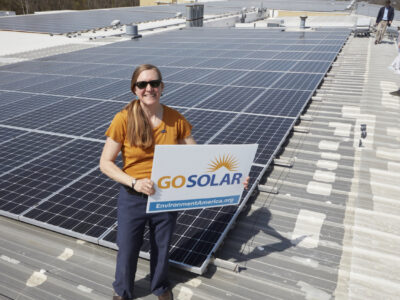The sun is rising on Orangeburg County, South Carolina’s solar capital. Down off of Bowman-Branch Highway lie 500-acres of solar-powered potential. Known to locals as Weathers Farm, the Palmetto Plains solar project is the largest solar farm in the state, producing 106 megawatts of power for Dominion Energy. This joint venture started as a collaboration between Cubico Sustainable Investments, a global investor in renewable energy, and Cypress Creek Renewables, a national solar and storage company. The completion of the farm came in September of 2019, where it started electrifying power for up to 15,000 homes. Despite its impressive power production, energy is not the only benefit associated with the Palmetto Plains solar project. It’s also slated to bring in $5 million in tax revenue to the county over the next few decades.. Regarding the project, Orangeburg County Council Chair Johnnie Wright Sr. notes, “We see solar energy as a win-win for our residents — the projects provide long-term revenue to the county as well as clean energy and substantial investments to our community.”
Given the reality that South Carolina has the fifth-highest rate of electricity consumption in the U.S. and its economy has taken a hit with the pandemic, the new jobs brought about by solar projects and the energy developed as a result is precisely the type of win-win the state could use right now. This is especially true since unemployment claims in SC spiked 400% to their highest rate at the end of July since 1976. Thankfully though, four recent studies have shown that South Carolina could generate 20,000 to 28,000 new jobs in energy efficiency and renewable energy. With national comparisons in mind, this seems entirely within reach for South Carolina. Clean energy investments throughout the country create 16.7 jobs for every $1 million spent, compared with only 5.3 jobs for that same investment in fossil fuels.
At the end of 2019, 40% of America’s energy workers were in clean energy, claiming over 2.25% of the nation’s overall employment, and these numbers now have officials across the state–in particular the city of Charleston–making some serious calculations, particularly regarding jobs and state finances. Currently, South Carolina sources 61% of its electricity from coal-fired plants and it spends $1.5 billion each year to import coal, natural gas, petroleum, and nuclear fuels for their electricity needs. These costs will just continue to rise too. Due to federal emissions allowances and other regulations–combined with the diminishing supply of fossil fuels–outsourcing isn’t getting any cheaper. That’s why there’s a massive opportunity in renewables to create jobs and save money. As of now, the state’s energy efficiency policies currently rank 34th and renewables power less than 3% of South Carolina’s grid, 2% of which is hydro. So, how does the previously mentioned Palmetto Plains project factor in?
Thanks to the Palmetto Plains’ presence in Orangeburg County, the locality is leading the state in what could become a renewable job recovery. South Carolina employed nearly 47,000 clean energy workers before the pandemic, coming in 24th in the nation for clean energy jobs, with 7,336 in renewables and 30,794 in energy efficiency. Brothers Landy and Hugh Weathers explain how they made the decision to lease their land to the Palmetto Plains project. Landy says, “Our job as farmers and the owners of properties is to do what we think is best for the property, not for right now but for the future.”
The future is bright for Orangeburg, with ten other projects announced and a promise of over $500 million in solar investment to provide 460 megawatts of power. Neighboring Calhoun and Bamberg Counties have seen the benefits firsthand, which is why they have made similar plans for half a dozen solar farms. It’s only a matter of time before they too lead by example and encourage their neighbors to do the same.





